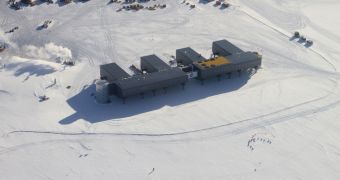Today marks the 100th anniversary of Roald Engelbregt Gravning Amundsen reaching the South Pole. The event occurred on December 14, 1911, when the Norwegian explorer and four others managed to reach 90° 0′ latitude south, marking the first time this ever happened in recorded history.
The expedition was extremely difficult for all participants, but they prevailed in the end, managing to reach the geographic South Pole without losing anyone on the road. Like today, this all came down to careful preparations.
These included acquiring good equipment and clothing, knowing how to handle dogs and sleds, and using skis effectively. Notoriously, Amundsen took only two photos during the entire expedition.
“I may say that this is the greatest factor – the way in which the expedition is equipped – the way in which every difficulty is foreseen, and precautions taken for meeting or avoiding it,” he wrote in 'The South Pole: an account of the Norwegian Antarctic Expedition in the “Fram”' (1912).
“Victory awaits him who has everything in order – luck, people call it. Defeat is certain for him who has neglected to take the necessary precautions in time; this is called bad luck,” he added.
The exact same things are perfectly valid today as well. Those who are expecting to visit Antarctica as they do some mountain or interesting landscape feature will have their fantasies blown away by the harshness of the Southern Continent.
Even now, Antarctica does not spare anyone who isn't entirely sure of what they're doing. Expeditions need to be planned carefully in advanced, and every contingency planned for meticulously. In Amundsen's words, Antarctica is a “vast plain of the same character in every direction.”
At this time, that plain is a little tamer, as it has been settled to some extent by permanent research stations. However, the continent is fighting the intrusion with everything it has, blasting away at artificial materials with snowstorms and intense winds.
Still, humans managed to find a way to inhabit the planet's geographical South Pole. The US operates a station at exactly that location, which can now house 100 people around the year. This is a far cry from the single tent that Amundsen left at the same location after the 1911 expedition.
Undoubtedly, a century of technological development has made the South Pole more readily accessible to exploration, but not to the extent that everyone can get on a plain and go there on a whim.

 14 DAY TRIAL //
14 DAY TRIAL //